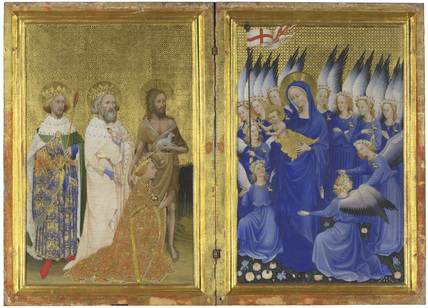
Velazquez – Philip IV of Spain in Brown and Silver
PREVIOUS: RUBENS – HET STEEN Philip IV of Spain in Brown and Silver: Diego Velázquez: about 1631-2 This splendid figure, resplendent in a formal costume […]

PREVIOUS: RUBENS – HET STEEN Philip IV of Spain in Brown and Silver: Diego Velázquez: about 1631-2 This splendid figure, resplendent in a formal costume […]

PREVIOUS: REMBRANDT – THE WOMAN TAKEN IN ADULTERY Seaport with the embarkation of St Ursula: Claude: 1641 We’re looking at an imaginary landscape, at a place that […]

PREVIOUS: LEONARDO DA VINCI – THE VIRGIN OF THE ROCKS Raphael: Portrait of Pope Julius II: 1511 Here we’re looking at Pope Julius seated in […]

PREVIOUS: UCELLO – THE BATTLE OF SAN ROMANO Jan van Eyck: The Arnolfini Portrait: 1434 While Uccello was experimenting with perspective in Italy, over in […]

PREVIOUS: MARGARITO D’AREZZO – THE VIRGIN AND CHILD The Wilton Diptych: about 1395-1399 The previous picture was one of the earliest signed works in the […]

Caravaggio: The Supper at Emmaus: 1601 We’re looking at the painting of a scene described in the gospel of St Luke. The story is that […]

An Autumn Landscape with a view of Het Steen in the Morning: Peter Paul Rubens: 1636 When we look at this picture we can tell […]

PREVIOUS: BOTTICELLI, VENUS AND MARS Leonardo da Vinci: The Virgin of the Rocks: Late 1400s, early 1500s There’s some imprecision about the date, which I’ll come to […]

PREVIOUS: HOLBEIN – THE AMBASSADORS Titian: Bacchus and Ariadne:1520-23 After the static pictures we’ve just seen, this one explodes with life, as the god Bacchus leaps […]

PREVIOUS: THE WILTON DIPTYCH Paolo Uccello: The Battle of San Romano: About 1438-40 We are looking at a battle scene – although quite a bloodless one. A […]
Copyright © 2024 | WordPress Theme by MH Themes